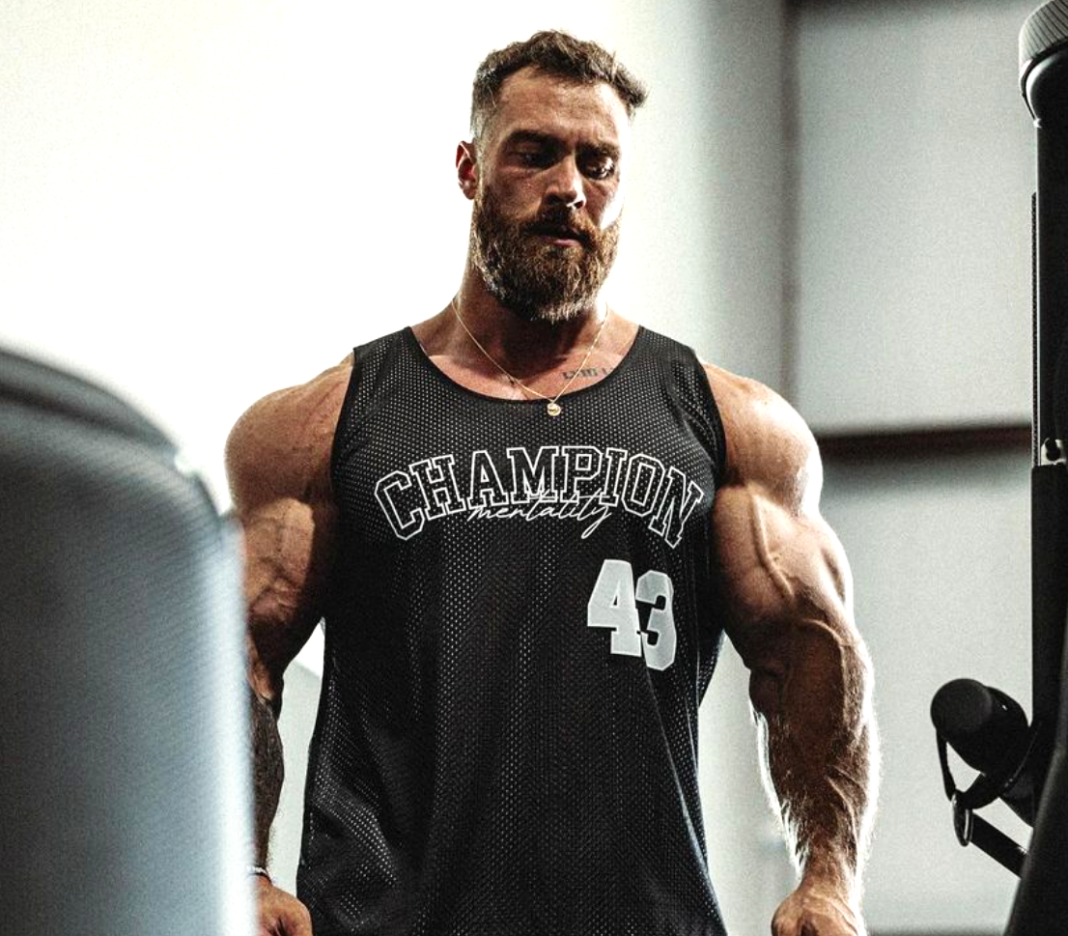Classic Physique Mr. Olympia Chris Bumstead looking wide. / Instagram
Wide shoulders are classic. They date back to at least Ancient Greece as indicators of masculinity. And when men first began lifting weights overhead, they sought broader shoulders. Little has changed up to the present day. Whether in a bathing suit or a business suit, shoulder width grabs attention. People may not prioritize back width or quad thickness, but almost everyone who weight-trains wants to expand the top of their frame. Let’s explore the most effective way to get wider shoulders.
WIDE SHOULDER AESTHETICS
Not only do both men and women find wide shoulders attractive, but research has demonstrated that it’s the most visually appealing aspect of a man’s body. In males, the clavicles and deltoids both grow during and just after puberty, making them a barometer of adult manliness. And in both men and women, broad shoulders make the waist appear smaller by comparison. The classic X-frame which goes from the other delts in to the midsection and out again to the outer quads is dependent on wide shoulders.
CLAVICLE WIDTH
A crucial factor in the width of your shoulders is the length of your clavicles (i.e. collarbone). Like other bones, your clavicles grow throughout your childhood and teen years. They typically stop lengthening around age 20, and they’re the last bones to fuse at, typically, age 23-25. Their length will likely, but not always, correspond to the size of the rest of your skeleton. Short of plastic surgery—which can lengthen clavicles only about 4 centimeters (1.5 inch) or shorten clavicles about 6 centimeters (2.4 inches)—there’s nothing you can do to change the length of your clavicles. (Well, there’s one unfortunate thing: A broken clavicle will shorten one side at least 2 centimeters after the fracture is set.)
With all bones, your clavicles may shrink noticeably in your old age. You begin to lose bone density at around 35 but much more dramatically in your senior years (especially in post-menopausal women). In middle age and beyond, make sure you get enough calcium, Vitamins D and K, magnesium, and zinc, and weight-train regularly. For more, see: How to Increase Bone Density
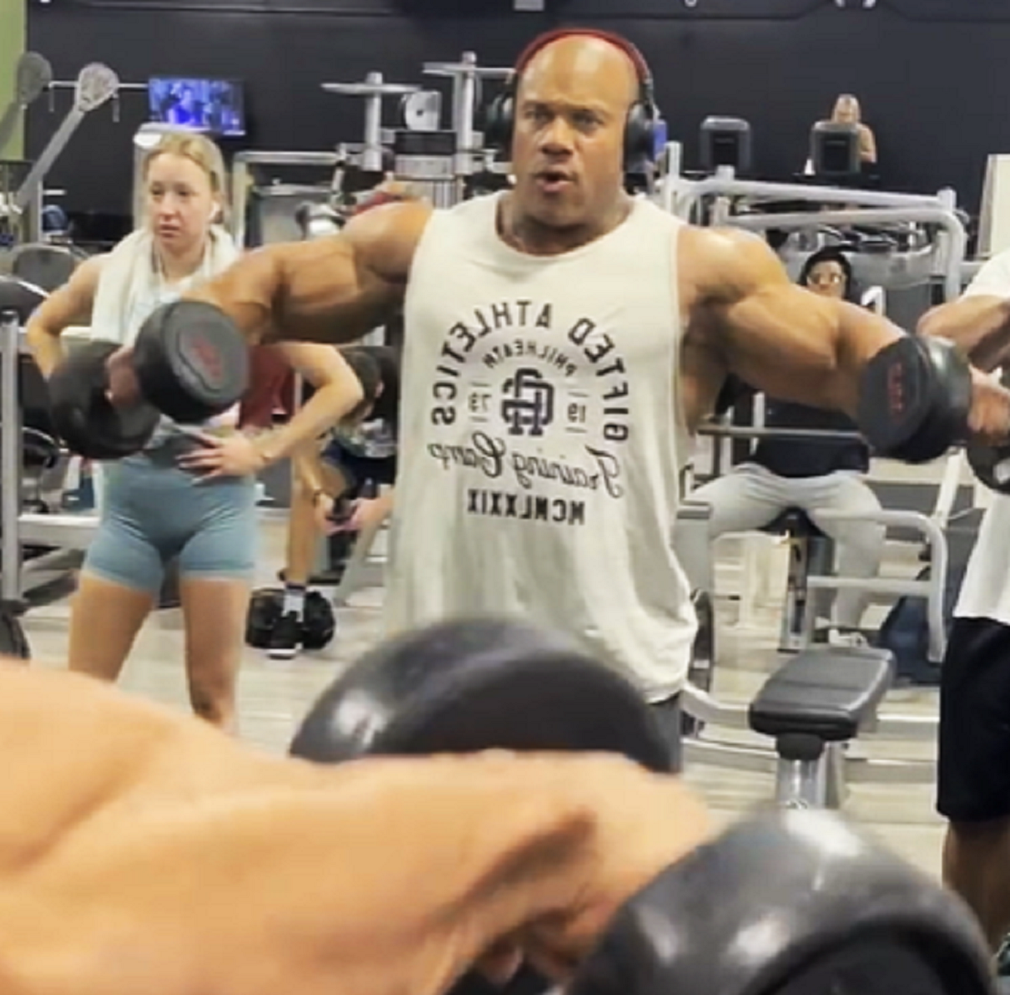
BUILD YOUR MEDIAL DELTOIDS
When Classic Physique Mr. Olympia Chris Bumstead was asked to list his 10 essential exercises, he included side laterals, right there with squats and deadlifts. And for good reason. Wide shoulders are classic, and the only way to widen your shoulders is to add muscle to your medial deltoids (a.k.a. lateral or middle deltoids), which are the middle of your three deltoid heads. They’re crucial to this because they rest on the outermost sides of each shoulder. For building up your medial delts, side laterals are crucial. But there’s more than one way to do them, and there are a couple of other ways to work your middle delts. Let’s explore 10 excellent exercises.
MEDIAL DELTOID EXERCISES
Dumbbell Side Lateral Start standing or seated with your arms down and dumbbells at your sides. Then, while keeping your arms slightly bent, lift the dumbbells up and out to approximately shoulder level. At the top of each rep, your pinkies should be higher than your thumbs.
One-arm Dumbbell Side Lateral This is a unilateral version of the previous exercise that allows you to better focus on each side.
Alternating Dumbbell Side Lateral And this is another one-arm version, but switching from the left to the right arm each rep.
Machine Side Lateral A side lateral machine has the advantage of vertical resistance, as the weight stack fights gravity from start to finish. In contrast, a dumbbell during a side lateral travels in an arc, so the resistance is much greater during the top halves of reps (when the weight travels more vertical) than the bottom halves (when the weight travels more horizontal).
Cable Side Lateral A cable side, whether done with one arm alone or both simultaneously, is another way to add a weight stack’s vertical resistance to a lateral movement.
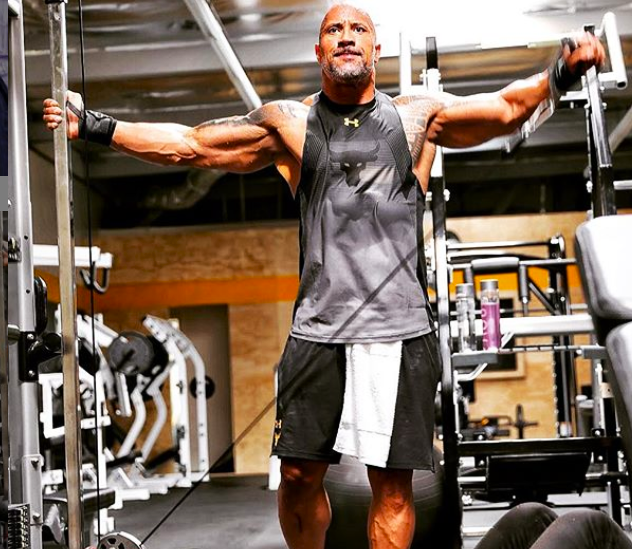
Power Side Lateral This is dumbbell exercise is performed with the elbows bent at approximately 90 degrees. There’s two ways to go: (1.) Raise your forearms up to shoulder height, or (2.) focus only on raising your elbows to shoulder height and keep your forearms pointed downward throughout. In either case, you can use more weight than in a traditional dumbbell side lateral.
Top Side Lateral Conversely, here’s a dumbbell exercise in which you’ll want to use 50% or less weight than a basic side lateral. Keep your arms nearly straight and focus only on the top halves of the movement, going from arms approximately 45 degrees to your sides to 90 degrees or a bit higher. This takes most of the horizontal movement out of the arm arcs and focus more on the vertical. It’s a great medial delt finisher.
Iron Cross This takes the top side lateral to its logical conclusion. It’s only the apex of the rep. Using light dumbbells, hold your arms straight out and parallel to the floor for as long as possible. Resist as your arms being to drop. When you can’t keep your arms out at least 45 degrees from your sides, the rep is over. Three or four such isometric holds are another great way to finish off a medial delt routine.
Wide-Grip Upright Row The upright row with a narrower than shoulder width grip is a compound exercise that works the trapezius more and the deltoids less. But take a wider than shoulder width grip, and it hits the medial deltoids more and the trapezius less. Try to raise your elbows as high as possible while keeping your clavicles from shrugging up.
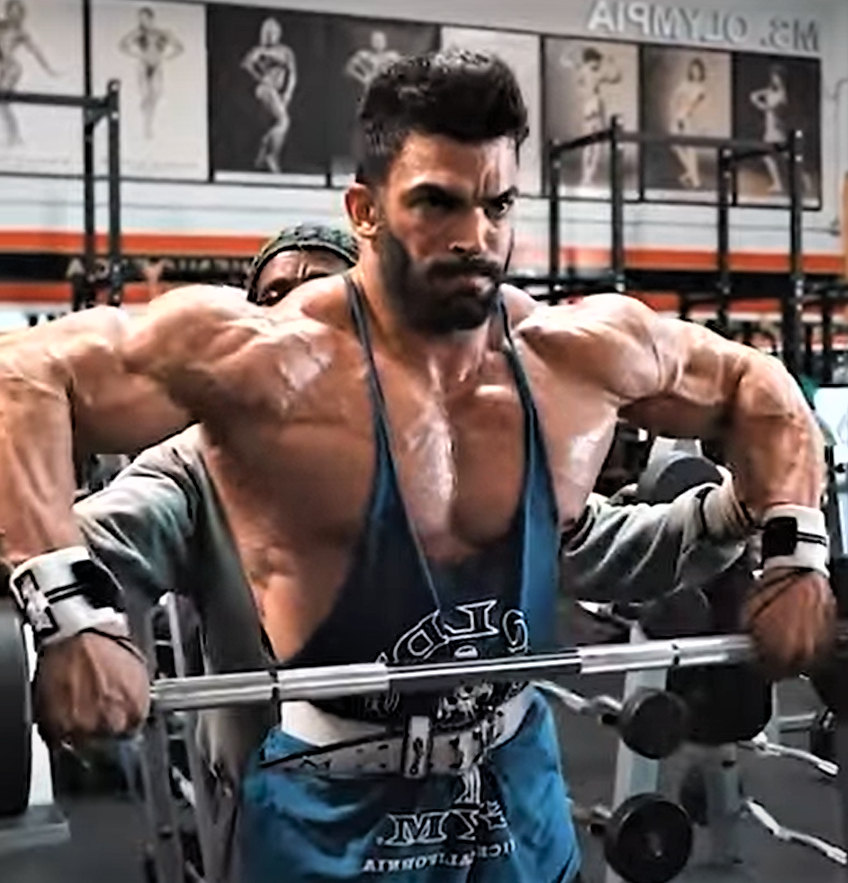
Monkey Row Think of this as an upright row with two dumbbells held at your sides. Raise your elbows as high as possible, letting the dumbbells travel up next to your sides. Keep your clavicles down; don’t shrug. (The name comes from the characterization of a monkey scratching both armpits simultaneously.)
MEDIAL DELTOID WORKOUTS
To focus on your medial delts, do any three of the preceding exercises in the same workout, each for three or four sets. If you include a compound exercise, like the wide-grip upright row or monkey row, do it after an isolation exercise (sidel lateral) to pre-exhaust your medial delts and better focus the compound lift on that area.
Here are three sample routines:
MEDIAL DELTOID WORKOUT #1
Machine Side Lateral — 4 x 10-15
Wide-Grip Upright Row — 4 x 10-15
Top Side Lateral — 4 x 10-15
MEDIAL DELTOID WORKOUT #2
Alternating Dumbbell Side Lateral — 4 x 10-15
Cable Side Lateral — 3 x 10-15
Monkey Row — 4 x 10-12
MEDIAL DELTOID WORKOUT #3
Dumbbell Side Lateral — 4 x 10-15
Power Side Lateral — 3 x 10-12
Iron Cross — 3 holds
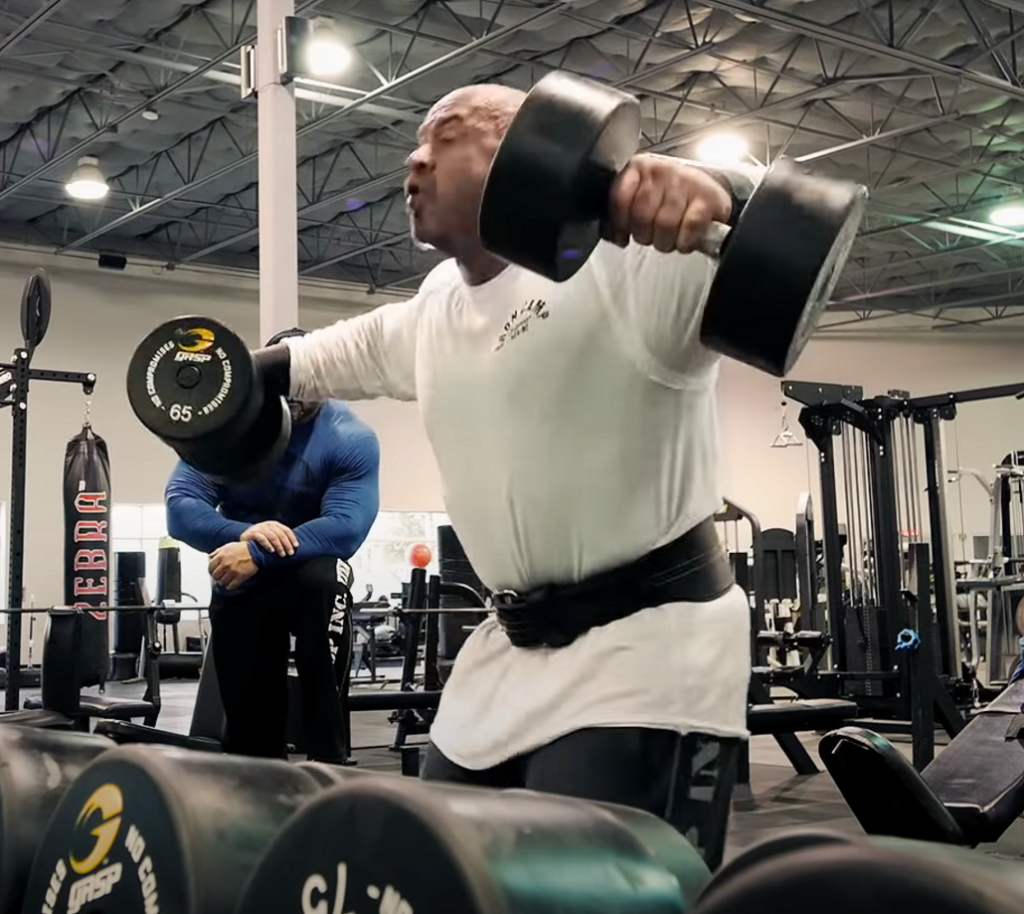
ANTERIOR AND POSTERIOR DELTOIDS
By now you might be asking, “But what about the rest of my shoulders, my front and rear delts? Do I train them separately?” You can, and this might be the best strategy to really focus on each. For example, you can work anterior delts after chest (push workout), posterior delts after back (pull workout), and medial delts with either legs or arms.
Alternately, you can train all three delt heads together, but do more sets for the middle delts and also do at least one side lateral exercise first when your strength and energy are greatest.
Here are three, width-focused shoulder routines, each of which includes three medial delt exercises like our sample routines above and only one exercise for front delts (overhead press) and one for rear delts (rear lateral). If you do more work than this for front and rear delts, just make sure it doesn’t come at the expense of the volume and intensity focused on your side delts—the key to wider shoulders.
SHOULDER WIDENING ROUTINE #1
Dumbbell Side Lateral — 4 x 10-15
Military Press — 4 x 10-12
Power Side Lateral — 3 x 10-12
Machine Rear Lateral — 4 x 10-15
Iron Cross — 3 holds
SHOULDER WIDENING ROUTINE #2
Machine Side Lateral — 4 x 10-15
Wide-Grip Upright Row — 4 x 10-15
Top Side Lateral — 4 x 10-15
Dumbbell Press — 4 x 10-15
Dumbbell Rear Lateral — 4 x 10-15
SHOULDER WIDENING ROUTINE #3
Alternating Dumbbell Side Lateral — 4 x 10-15
Machine Shoulder Press — 4 x 10-12
Cable Side Lateral — 3 x 10-15
Reverse Pec-Deck Flye — 4 x 10-15
Monkey Row — 4 x 10-12
THE EXTRA WIDTH ROUTINE
One technique that can boost your width is to work medial delts twice as often as other body parts. The second routine can more of a pump-out routine of high reps, such as side laterals for four sets of 25 reps. So, do one of the shoulder routines above, and on another day, at least 48 hours apart, hit medial delts alone. For example:
Day 1: Legs
Day 2: Shoulders & Abs
Day 3: Back
Day 4: Chest & Abs
Day 5: Medial Delts (side laterals: 4 x 25 reps) & Arms
One great thing about medial delts is you can train them anytime anywhere, as long as you have one or two dumbbells or even just a somewhat weighty item (example: a gallon of water weight 8.34 lbs. [3.78 kg.]). In or out of the gym, consider working an extra, high-rep, side lateral workout into your weekly routine.
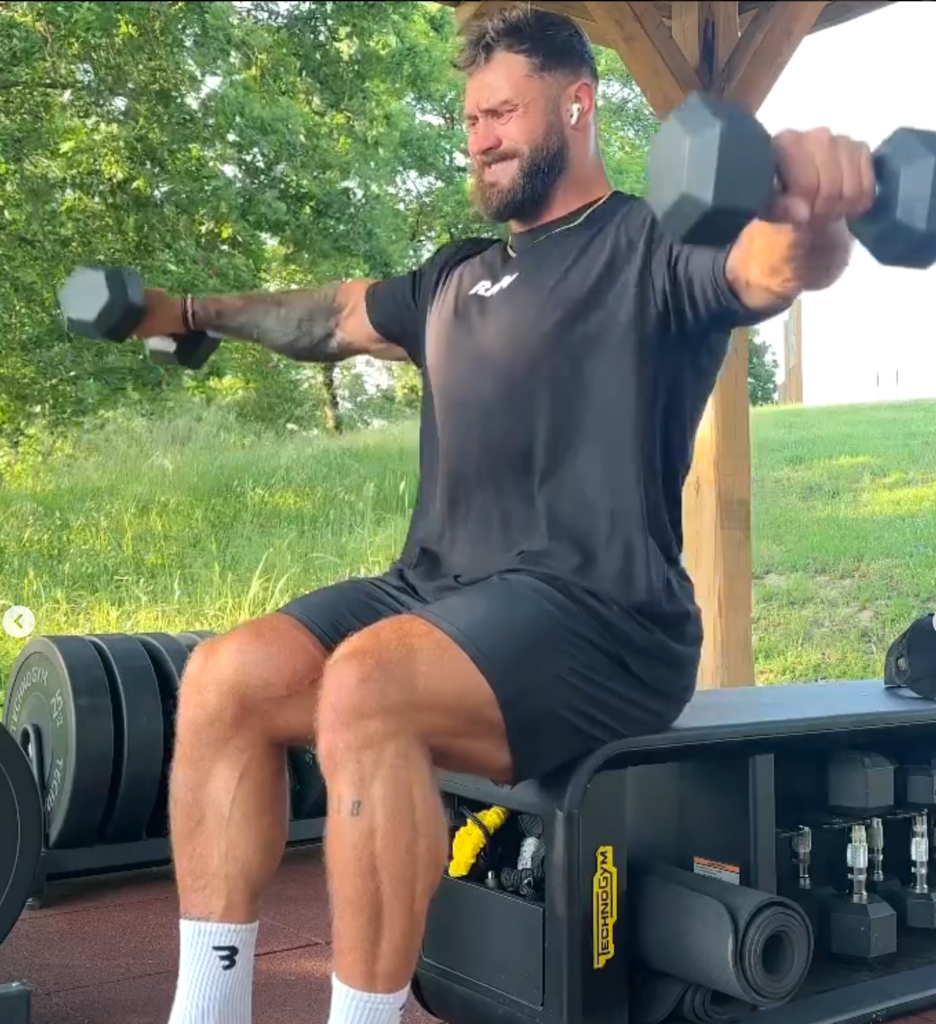
TRAPS AND NECK
Some think a big trapezius and thick neck, by filling in the middle area, makes you appear slump-shouldered and narrower. The theory is that a classic physique is all about shoulder width but not trap or neck size. We don’t fully subscribe to this theory. Certainly, you don’t want to overdevelop your traps, but you don’t want to under-develop them either. Everything should be in balance, and that includes a muscular neck, which is one of the most visible indicators of strength.
WAIST AND UPPER BACK
Let’s return again to the top of the ideal X-frame we mentioned before. The top half is formed from a small waist and hips angling up to wide shoulders and lats. To make your shoulders appear broader, make your midsection smaller. Keep your abs, hips, and lower back tight with exercise, cardio, and diet. Beware of low-rep oblique and hip flexor exercises, which can expand your middle. And widen your lats with pullups, pulldowns, and rows to fill in the upper part of the X just below your shoulders.
POSTURE
If you’re prone to slouching and rolling your shoulders down and forward, you may be shocked at how much wider your shoulders look when you practice proper posture. Pull your shoulder blades back to maximize your shoulder width. Practice in a mirror at first to see what position makes you widest. And then practice all the time, whether standing or sitting, until it becomes second nature. By the way, this is another good reason to work your trapezius, which keep your shoulders up, even after a long day. Furthermore, a complete weight-training program that stresses all muscle groups and includes standing, compound exercises like deadlifts, overhead presses, and barbell rows, will help strengthen your back and core and make it easier to maintain proper posture.
HOW TO GET WIDER SHOULDERS: CONCLUSION
Of course, genetics matter. Some people were blessed with wide clavicles, just as some people—sometimes the same lucky folks—can more easily grow shoulder muscle. However, regardless of your DNA, by focusing more sets and intensity on your medial delts, you can widen your shoulders significantly. Furthermore, by maintaining a slim middle and proper posture along with expanding your deltoids, you can look like an X, even if today you’re more of an I.
Related content: Science Says: Best Shoulder Exercises



































